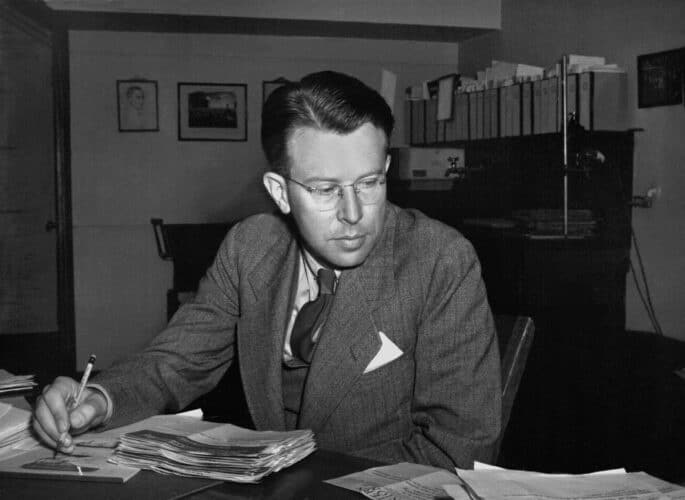Ernest Lawrence (8 August 1901 – 27 August 1958) was an American nuclear physicist. He received the Nobel Prize in Physics in 1939.
Life and Career
Ernest Lawrence was born on 8 August 1901, in Canton, South Dakota, United States.
He displayed an early interest in science and went on to study physics at the University of South Dakota, earning his bachelor’s degree in 1922. He continued his education at the University of Minnesota, where he completed his master’s degree in 1923 and his Ph.D. in physics in 1925.
In 1928, Lawrence joined the University of California, Berkeley, as a professor of physics. During the 1930s, he became involved in the emerging field of nuclear physics. In 1931, he invented the cyclotron, a revolutionary particle accelerator that allowed for the acceleration of charged particles to high energies within a circular magnetic field.
Lawrence’s invention of the cyclotron had a profound impact on scientific research. It enabled the production of high-energy particles, leading to breakthroughs in nuclear physics, the discovery of new elements, and advancements in medical treatments through the production of radioactive isotopes for cancer therapy.
Ernest Lawrence passed away on 27 August 1958, in Palo Alto, California, United States.
Award and Legacy
In 1939, he was awarded the Nobel Prize in Physics for his invention and development of the cyclotron. He became the youngest Nobel laureate in the field of physics at that time.
Ernest Lawrence’s legacy is enduring and multi-faceted. His development of the cyclotron laid the foundation for particle accelerators, which have become essential tools in modern physics and particle research. The Lawrence Berkeley National Laboratory, established in 1931, is named in his honor and continues to be a leading research institution in the United States.
Furthermore, his work on medical applications of nuclear physics has had a lasting impact on cancer treatment and diagnostic techniques. The legacy of his scientific contributions lives on through the continued research and advancements made possible by his pioneering work in nuclear physics.

